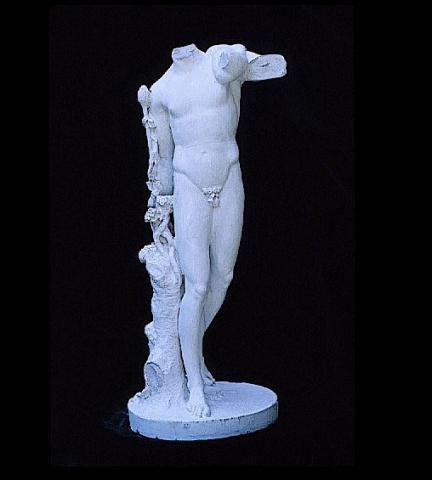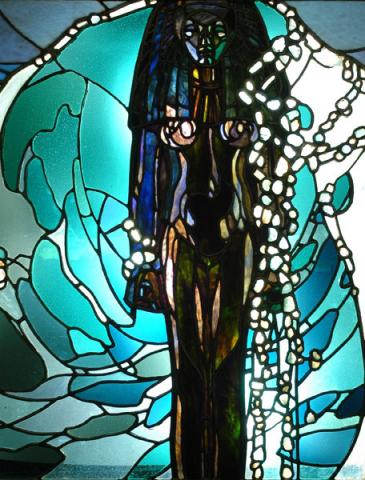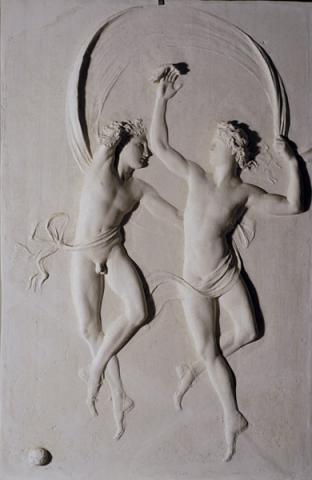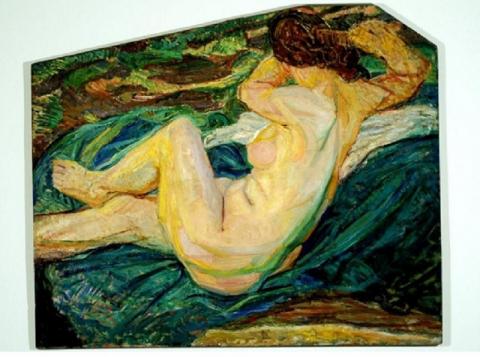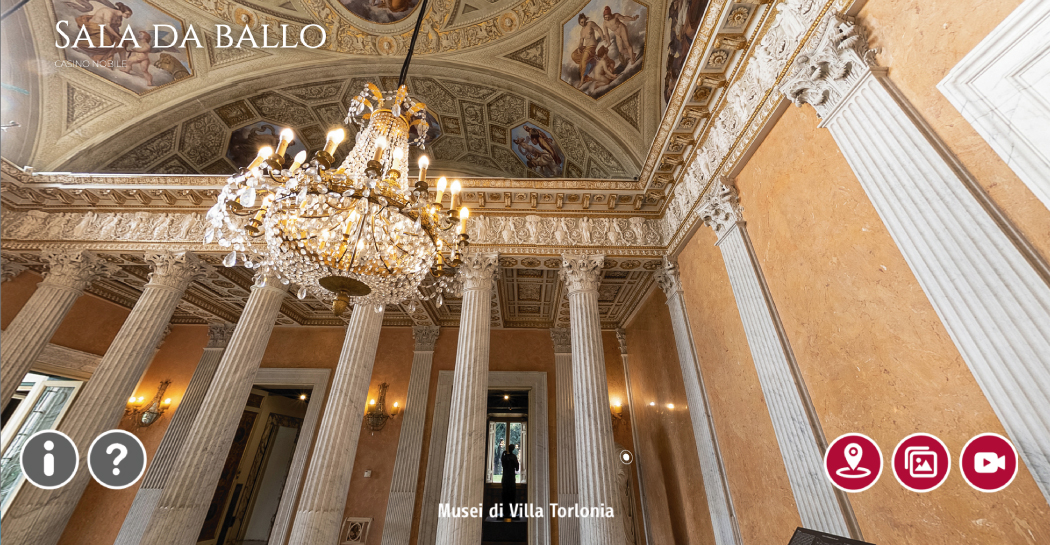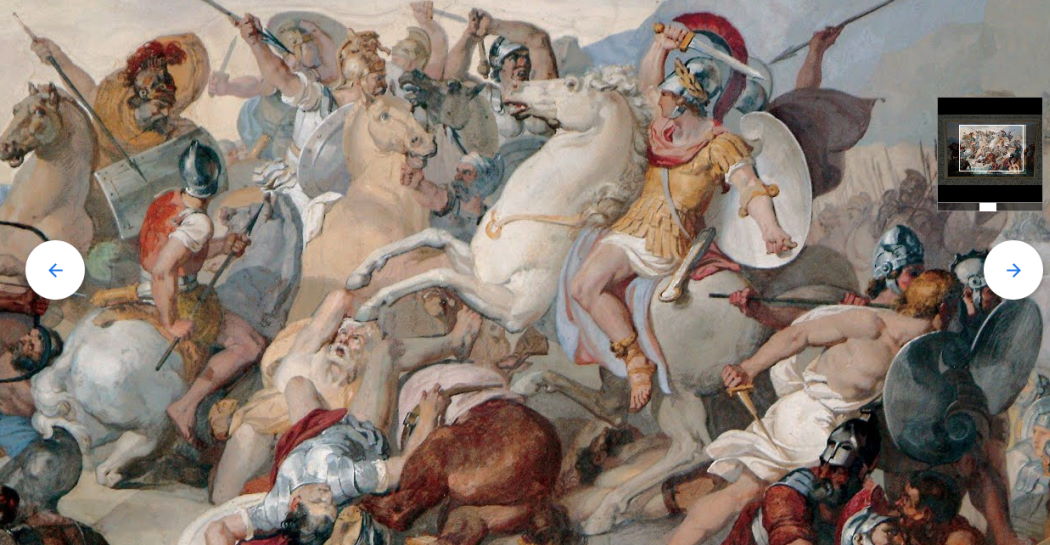The Artwork of the Month of the Roman School Museum - September 2022
September 2022
Ferruccio Ferrazzi (Rome, 15 March 1891 - Rome, 8 December 1978)
Domenica (Nudo all'aperto), 1915
Oil on panel, 93.5x111.5 cm
Comodato eredi Ninetta Ferrazzi
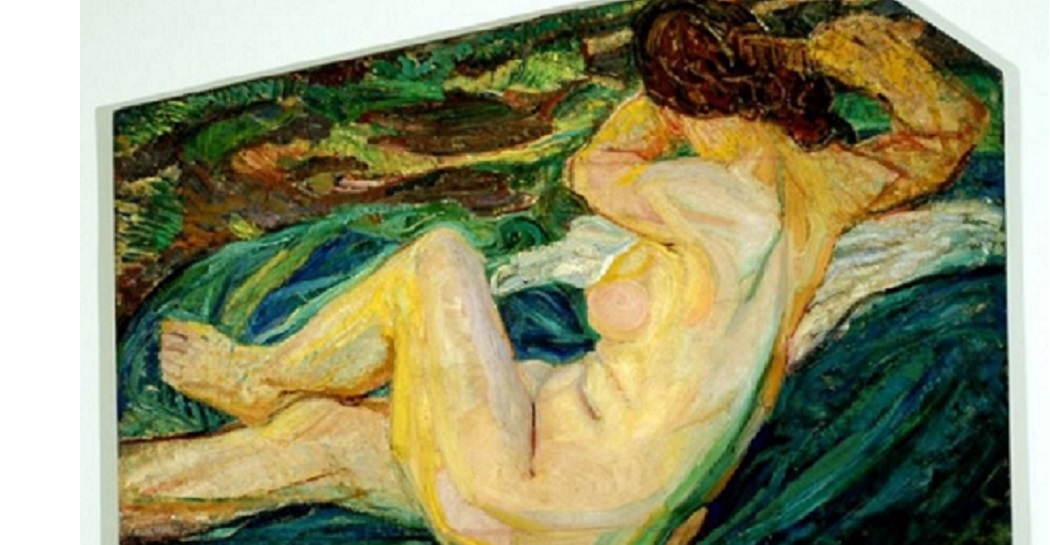
"My God why be a slave to a painting or any other geometric form? [...] No, this is too boring. We are spectators from a single point, why not define it? There are no basic planes, figures rest where we place them, not according to that or any other line in the picture'. This is what Ferruccio Ferrazzi wrote in a page of his diary in July 1915, raging against the traditional four-sided format of the pictorial support. This explains the irregular outline of Domenica's panel ( Nudo all'aperto), the upper edge of which has a contour that follows the sudden movement of the woman's arms, intent on combing her hair with her back to the viewer.
The traditional subject of the female nude set in nature here becomes the architectural focus of a space without specific connotations of time and place. The imposing figure, painted with material brushstrokes and acid colours that reveal the influence of the German Expressionists, carves out a spatial cavity whose laws and contours it dictates, constituting a fragment of space that is autonomous and closed in on itself.
Ferruccio Ferrazzi painted this panel in 1915: these were years of great experimentation for him, during which he focused his research on the careful study of the human figure and perspective space, which he revisited by questioning the traditional Albertian 'window'. Domenica (Nudo all'aperto) is a good example of Ferrazzi's poetics of the "unitary fragment", according to which the format of the canvas must adapt to its content, resulting in irregular shapes, with oblique sides and unusual cuts that eliminate dead angles, focusing attention solely on the subject and accentuating its movements or lines of force. Ragghianti emphasises how this brings the subject depicted closer to the viewer, creating a more equal relationship, 'like a theatrical drama brought into the midst of the audience [...] and not spaced out on the stage and framed in its arc'.
Domenica (Nudo all'aperto) was exhibited for the first time in 1916, at the LXXXV Esposizione della Società Amatori e Cultori di Belle Arti, at the Palazzo delle Esposizioni in Rome. Ferrazzi, then 25 years old, personally set up the room that would host his works, configuring it as the interior of a prism, with slanted walls like the silhouettes of the paintings he exhibited. The 'prismatic room' was judged scandalous by most critics, but was appreciated by a Swiss collector, Walter Minnich, who bought seven of his works and invited him to move in with him in Montreux, where Ferrazzi stayed for a year.
Ninetta Ferrazzi, the artist's daughter, supposes that her father had brought Domenica (Nude in the Open Air) to Switzerland, but that in the 1930s it was returned to him by Minnich together with other works in order to favour him in the exhibitions of those years. However, the painting remained unsold in Ferrazzi's studio and is still owned by his heirs.
Ferruccio Ferrazzi was born in Rome in 1891. His father Stanislao, a sculptor and copyist of paintings, initiated him and his brother Riccardo into the study of painting. In 1907, he made his debut at the LXXVII Esposizione della Società degli amatori cultori di belle arti in Rome at the age of 16 and amazed the Roman environment with his independence from the dominant artistic models. The following year he won a scholarship from the Catel Institute, on the basis of which he was assigned as a tutor the landscape painter Max Roeder, of Boecklinesque ancestry, who introduced him to the world of the German artists in Rome. In 1913, he won the Pensionato artistico nazionale and in 1914 went abroad for the first time, following his father to Paris, where he studied old and modern painters. Returning to Rome, in the following years he was influenced by Futurism, which he reworked in a personal manner. In 1916, he set up his own personal room at the LXXXV Esposizione della Società Amatori e Cultori di Belle Arti, which caused a great scandal due to its disruptive novelty. It was appreciated by the Swiss collector Walter Minnich, who invited him to his home in Montreux, where Ferrazzi stayed for a year. In 1922, he married Horitia Randone, daughter of Francesco Randone, a master ceramist and lover of hermetic philosophies animated by principles of humanitarian socialism. In 1926 Ferrazzi was awarded the Carnegie Prize by a jury chaired by Pierre Bonnard, and in 1933 he was elected as a member of the Royal Academy of Italy: he was one of the few academics not members of the Fascist party. After the war, he continued his artistic and exhibition activity, in parallel with his teaching and directing activities at the Studio del Mosaico Vaticano.
He died in Rome on 8 December 1978.
Back to the section > The Artwork of the Month of the Roman School Museum


























